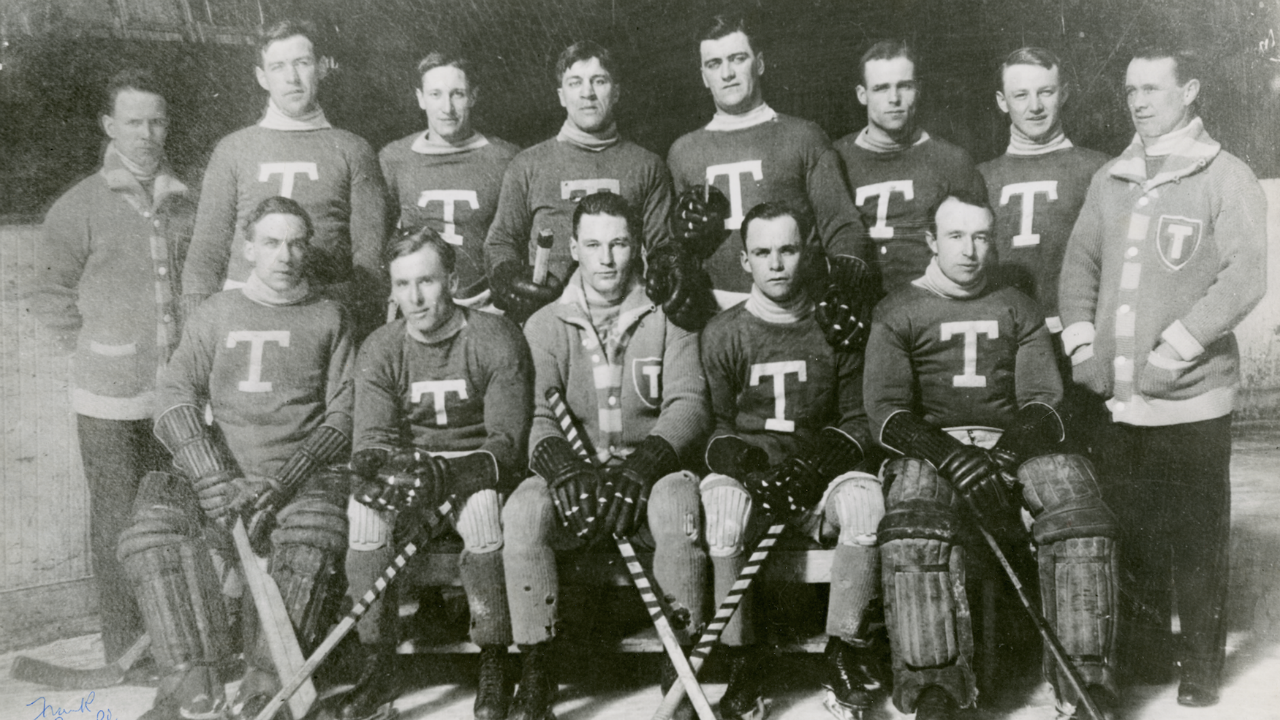One hundred and twenty-five years ago this week, Canada’s then Governor General, Lord Frederick Stanley, announced his intentions to donate a “challenge cup, which should be held from year to year by the champion hockey team in the Dominion.”
The rest, as we know, is history.
Over the ensuing two decades, the Stanley Cup was contested between the champions of Canada’s amateur hockey leagues. This explains how Kenora, a small community in northwestern Ontario, was able to secure the silverware in 1907. Beginning in 1915, the rights to hoist Lord Stanley’s mug were awarded to the winner of a playoff series between the reigning champions of the National Hockey Association (the precursor to the NHL) and the Pacific Coast Hockey Association (PCHA).
When the NHA ceased operations in the fall of 1917, to be supplanted by the National Hockey League, the Stanley Cup entered a new era. Teams from the PCHA would still challenge for the trophy, only now they’d be squaring off against clubs from the newly minted eastern league.
At the conclusion of the NHL’s inaugural season 99 years ago this month, the Arena Hockey Club of Toronto, also known as the Arenas, took on the Montreal Canadiens in a total goals playoff series for the privilege to represent the NHL in a final showdown for the Cup.
On the West Coast, the Vancouver Millionaires had defeated the Seattle Metropolitans, and headed east to take on the Arenas. No less than 24 hours after securing the Pacific Coast championship, the Millionaires were on a train bound for Toronto, a journey that was expected to take the better part of a week.
When the series began on March 20 – no less than a day after the Millionaires arrived from their transcontinental trek – it wasn’t simply a competition between two leagues; it was a clash of two brands of hockey.
The PCHA, founded by the Patrick brothers and unlike the NHL, still used six skaters and a goaltender. This extra position was known as the rover and, as the name suggests, it afforded the additional player with the ability to roam the ice as needed. In 1910 The National Hockey Association had eliminated the position, but it persisted in western leagues until the 1920s.
But it wasn’t just the rover that set the PCHA apart. It also featured a limited forward pass, also known as the “offside pass.” In the centre ice zone, PCHA could make forward passes, while their NHL counterparts were still restricted to lateral plays.
In order to account for such fundamental differences in rules between the two leagues, each game of the series alternated between NHL and PCHA rules. As a result, there was a decided advantage to be had each contest. And with NHL rules set aside for three of the five games, it was the Arenas’ Stanley Cup to lose.
Toronto won the first game 5-3 and then Vancouver took Game 2 under PCHA rules. It was during the second game that another quirky western rule was introduced. In the Pacific league, no two players from the same team could occupy the penalty box at one time. If there were multiple, overlapping infractions, one player had to wait for the original violation to expire before serving their penalty. This was known as a “deferred penalty.”
According to the Globe, “neither the officials, fans nor the players themselves had a very clear understanding of the rules, and several delays occurred for conferences.”
Games 3 and 4 went to the teams playing under their respective rules. Toronto doubled up Vancouver 6-3 in Game 3, while the Millionaires trounced the Arenas 8-1 to tie the series at 2-2, setting the stage for a fifth and deciding game.
Game 5 was played under NHL rules, but the “goalers” stole the show. In what would be the lowest scoring game of the series, the Arenas edged the Millionaires 2-1 in what the Globe referred to as the “fastest, most spectacular game of (the) entire series,” highlighted by wonderful goaltending.
Source: Wikimedia Commons
After the Cup had been awarded, the two leagues had business to discuss. Frank Patrick, president of the PCHA, travelled to Montreal to meet with the NHL’s Frank Calder to discuss adopting uniform rules for the next Stanley Cup championship. Patrick agreed to six-man hockey, on the condition that the limited forward pass stay on the books. While the changes were not yet official, Calder made the announcement on April 9, suggesting the following year would see a new era of Stanley Cup action.
But it never came to pass.
The alternating of rules continued in 1919, but there would be no trophy. The league suspended play during the Final due to the devastation brought on by the Spanish Influenza. Earlier that year, Ottawa’s Hamby Shore succumbed to the illness and Montreal’s Joe Hall later died after he contracted the flu during the post-season.
This was the first time the league did not issue the Stanley Cup. The only other time it was not awarded was 86 years later during the 2004-05 lockout.
Source: City of Toronto Archives, Globe and Mail fonds, Fonds 1266, Item 9946.
The next time Toronto won the Stanley Cup, it was as the St. Patricks in 1922. Perhaps it was the luck of the Irish, because the franchise wouldn’t hoist it again for another decade, its first as the Maple Leafs.










